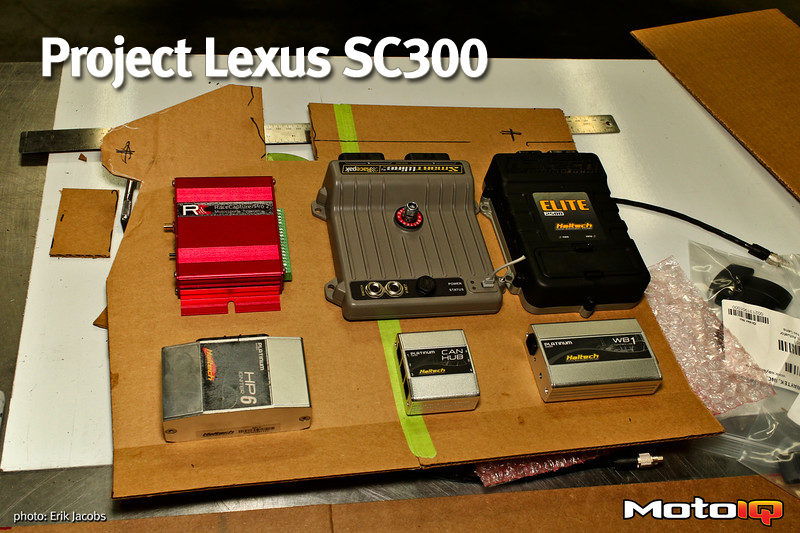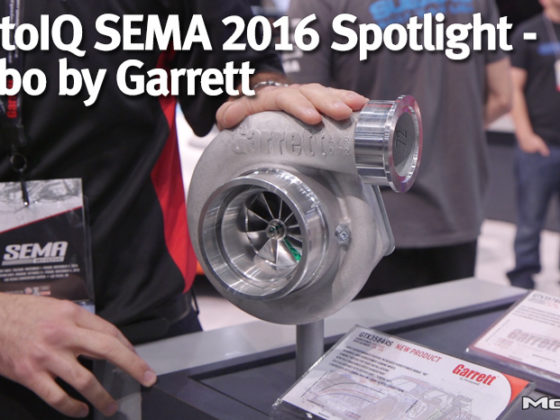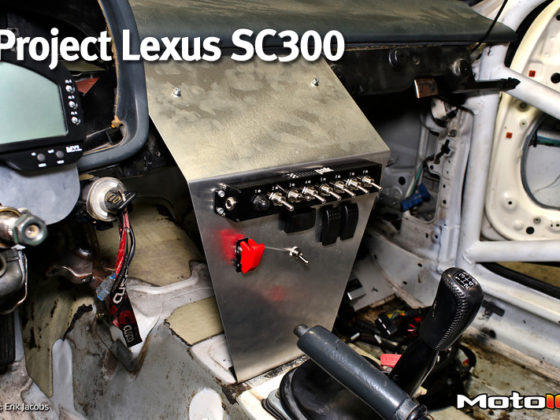Project Lexus SC300 Road Racer: Part 5 – Placement Makes Perfect
The interesting thing about a massive (re)wiring project is that a really, really large portion of the project does not even involve touching wires. Think about it for a moment. Once the car is completely gutted, and you’ve made your electronic components selection, and you’ve plunked down your hard-earned pennies to get the electronics into your hands, you now have to figure out where to place everything. And, if you want to do it right, that means fabrication. Double stick tape only goes so far.
After all, how else will you know how long the wire from the power distribution system (Racepak Smartwire) to the tail light is if you haven’t placed the power distribution system in the vehicle? While step one in the project is determining what your needs are, which informs your electronic component selection, step two is inevitably deciding on component placement in the vehicle and fabrication of all kinds of panels and other things to secure those components.
The environment of a race car is harsh, especially when it comes to vibration. Ensuring that electronic components are environmentally protected as best as possible ranks high on the list of tasks.
 This is Tom Stumpf. He may look young, but he’s been fabricating in, on and around race cars for sixteen years.When he’s not busy helping to make the Robertson Racing Ford GTs go quickly around the track, or helping other teams with race support, he finds time to work on my project.
This is Tom Stumpf. He may look young, but he’s been fabricating in, on and around race cars for sixteen years.When he’s not busy helping to make the Robertson Racing Ford GTs go quickly around the track, or helping other teams with race support, he finds time to work on my project.When it comes to a front-engine race car, in almost all cases the passenger footwell and firewall area is going to be a good place to mount most electronic components that need to live in the cabin. This location is good for a few reasons, but, namely, there is generally nothing else going on in that area. Depending on the vehicle and the exhaust routing, it may or may not be hot, but heat shielding can do a lot to mitigate that. Once the firewall is properly re-sealed after removing factory components, and assuming there aren’t any holes in the floor, the area would generally stay dry unless the car is standing still in a downpour.
 The floor at the front of the passenger footwell is a good location for some of the electronic components.
The floor at the front of the passenger footwell is a good location for some of the electronic components.If you are like me, and are still in pre-racing-license track-day mode, you will inevitably need to keep a passenger seat to carry an instructor. While there are quite a few racers out there who use hand controls due to various issues, most people that will ride shotgun are going to have legs, and those legs have to go somewhere. This means that, for my purposes, tucked far forward against the firewall is the best location for me and the SC300. Muddy dirty feet and engine computers should not mix. This has a drawback of making it harder to access the various electronic components in a hurry. In the future I can get fancy and bring out USB and other connections to a panel mounted on the rollcage (you wouldn’t even need to open the door to access the ECU and other systems), but for now the floor area will suffice.
 Since there are quite a few components to be mounted, it made sense to try and give them some space and to also try to reuse the mounting options that Toyota provided from the factory.
Since there are quite a few components to be mounted, it made sense to try and give them some space and to also try to reuse the mounting options that Toyota provided from the factory. This area of the passenger footwell already had a panel bolted to it, so there were quite a few studs and holes that we could re-use. Tape, cardboard and razor blades are supplies that any good fabricator should have lots of.
 Here’s an initial mock-up of the panel, its bends, mounting holes, and locations for the various electronic components.
Here’s an initial mock-up of the panel, its bends, mounting holes, and locations for the various electronic components.At this point in the project, you probably should have read all of the product manuals for all of your components. If you had, you would have known that the Racecapture/Pro data logger really wants to be centrally mounted in the vehicle to give the best performance of its accelerometers (to measure g-forces). And, since you knew that, you would not have figured the data logger into your measurements for your electronics mounting panel. And then you wouldn’t end up making a bunch of extra attachment holes in your nice new panel. Right?




